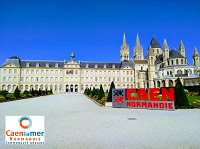Présidents de session
Constraints from heavy-ion collisions at relativistic energies
- Byungsik Hong (Korea University)
In an ultra-relativistic heavy-ion collision, the geometry of the interaction region is shaped by the (random) positions of the nucleons that populate the colliding nuclei during the ultra-short duration of the collision process. As the created system expands hydrodynamically to the final state, the details of the spatial distributions of these nucleons (clustering, deformations, skin...
Because of strangeness conservation, strange hadrons are produced in pairs through the so-called associated production. As a result, they have small production cross sections and are also not likely to be destroyed after their production in nuclear collisions. With their relatively large masses, their yields in nuclear collisions at energies below their production thresholds in free space are...
The HADES experiment was designed for the exploration of the QCD phase diagram at high baryochemical potential and moderate temperatures as well as for hadron physics with proton and pion beams. In A+A collisions at 1-2 AGeV strangeness production is close to threshold, thus becomes a rare observable being sensitive to the dense baryonic matter that has been created.
The most recent, high...
The ultrarelativistic Pb+Pb collisions are the source of many interesting processes. One of them is creation of the virtual photons by two moving electromagnetic fields generated by charged spectators. Moreover, these photons can excite the Pb nuclei and excite them substantially. The Pb
Our study focuses on the photon induced Pb spectator and its various channels of dexcitation. We...

